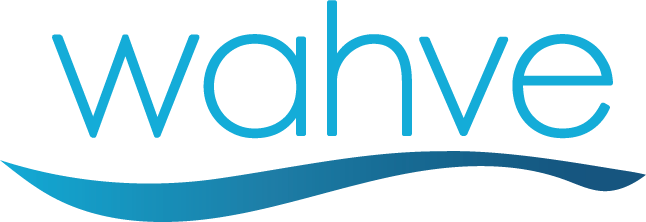The insurance industry stands at a critical inflection point. Shaped by ongoing digital disruption, changing workforce expectations, and global economic shifts, firms are being called to rethink not only how they do business—but who they do it with. While technological transformation continues to reshape the way insurance products are sold and serviced, it’s the human capital behind those innovations that will ultimately determine which companies thrive in the coming decade.
Yet, talent acquisition and retention remain some of the industry’s most pressing—and complex—challenges. Aging demographics, economic uncertainty, and the competition for skilled workers are forcing organizations to shift from traditional hiring models to more adaptive, future-focused strategies. In this article, we explore how insurance firms can navigate these evolving workforce dynamics with a focus on resilience, diversity, and long-term growth.
An Aging Workforce: Preserving Experience While Building the Future
One of the most well-documented challenges in the insurance sector is its aging workforce. According to industry reports, a significant portion of employees in underwriting, claims, and brokerage roles are over the age of 55, with many nearing retirement. These professionals hold decades of institutional knowledge—relationships, historical context, and specialized skillsets—that are difficult to replace overnight.
Companies that take a passive approach to this looming shift risk losing not just individuals, but critical knowledge and continuity. To proactively address this, leading firms are implementing structured knowledge transfer initiatives, internal mentorship programs, and phased retirement options. However, one strategy gaining significant traction is the remote engagement of retirement-ready professionals in part-time or project-based roles.
These seasoned experts can continue contributing from anywhere in the country, providing everything from training and quality control to strategic advisory. This model preserves expertise, creates cost-efficiencies, and provides younger employees with access to mentorship—bridging the generational divide while maintaining operational continuity.
Talent Acquisition in an Uncertain Economy: From Volume to Value
In an unpredictable economic environment, hiring decisions carry more weight than ever. Insurance companies must strike a careful balance between controlling costs and building teams capable of navigating a more competitive, tech-driven marketplace. The focus is shifting from hiring in volume to hiring for value—seeking candidates who are adaptable, tech-savvy, and aligned with the company’s long-term goals.
To achieve this, organizations are leaning into more data-driven talent acquisition strategies, leveraging workforce analytics and recruitment marketing to target ideal candidates. There is also a growing emphasis on employer branding—communicating not just what the job entails, but what the company stands for. Purpose, culture, and flexibility are emerging as key differentiators for top-tier candidates.
In addition, flexible work models—particularly hybrid and remote arrangements—are expanding access to diverse talent pools across geographic boundaries, enabling companies to find the right fit rather than settling for what’s available locally.
Reframing the Industry for the Next Generation
To younger professionals, the insurance industry is not always seen as innovative or exciting. This perception gap is a missed opportunity, especially when the industry offers a stable career path, room for growth, and meaningful work that impacts people’s lives and livelihoods.
To attract early-career talent, insurance companies must reframe how they present themselves. That means going beyond compensation and benefits to showcase career development pathways, mentorship opportunities, and purpose-driven work. Initiatives like internship programs, university partnerships, and fast-track leadership development programs can be powerful tools in bringing new energy into the workforce.
It’s also important to highlight the role of technology and innovation in the industry—from predictive analytics in underwriting to AI in claims processing—demonstrating to digitally native professionals that insurance is evolving, and they can be part of that transformation.
Diversity and Inclusion: A Strategic Imperative, Not a Trend
In today’s global marketplace, diversity is not just a value—it’s a competitive advantage. Research consistently shows that diverse teams outperform their peers in creativity, problem-solving, and decision-making. In the insurance industry, where trust, empathy, and insight into consumer behavior are central to success, building inclusive teams is essential.
This requires more than checking boxes. Companies must embed diversity, equity, and inclusion (DEI) into their recruitment pipelines, leadership development efforts, and workplace culture. That includes removing bias from hiring processes, offering inclusive benefits, and creating safe spaces for dialogue and employee feedback.
Leadership buy-in is critical. So is transparency. Setting measurable DEI goals and reporting on progress ensures accountability and helps foster trust among employees, clients, and partners.
Embracing Flexible Talent Models: A Bridge Between Generations
As the workforce becomes more multigenerational, with Baby Boomers, Gen X, Millennials, and Gen Z often working side by side, companies must rethink how they define and deploy talent. A one-size-fits-all employment model no longer works.
One innovative approach is to blend traditional full-time roles with flexible staffing solutions, such as tapping into experienced professionals who prefer to work remotely or on a part-time basis post-retirement. These individuals can fill talent gaps in underwriting, claims, HR, operations, and more—providing immediate impact without long onboarding periods.
This approach is particularly powerful in addressing turnover, succession gaps, and hard-to-fill positions in rural or high-cost regions. It also supports a culture of flexibility and work-life balance that aligns with modern workforce values.
The WAHVE Advantage
Organizations like WAHVE (Work At Home Vintage Experts) are leading the way in offering this flexible, intergenerational talent model. By connecting insurance firms with highly qualified, retirement-ready professionals who want to continue contributing remotely, WAHVE enables companies to retain institutional knowledge, boost productivity, and scale talent with agility.
WAHVE’s model is especially valuable for firms looking to optimize budgets while maintaining excellence in service delivery. Whether filling a short-term vacancy or building out a long-term support team, this approach supports both operational needs and strategic goals—proving that experience, flexibility, and innovation can go hand-in-hand.

0 Comments